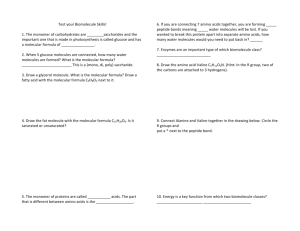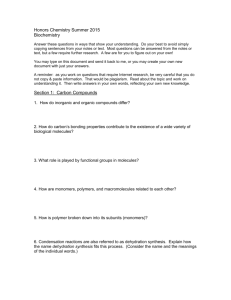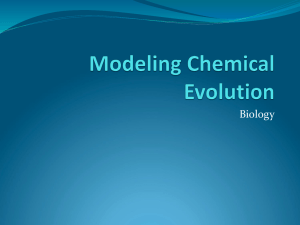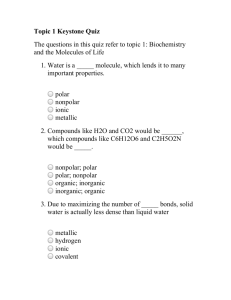Answers - AP BIOLOGY!
advertisement
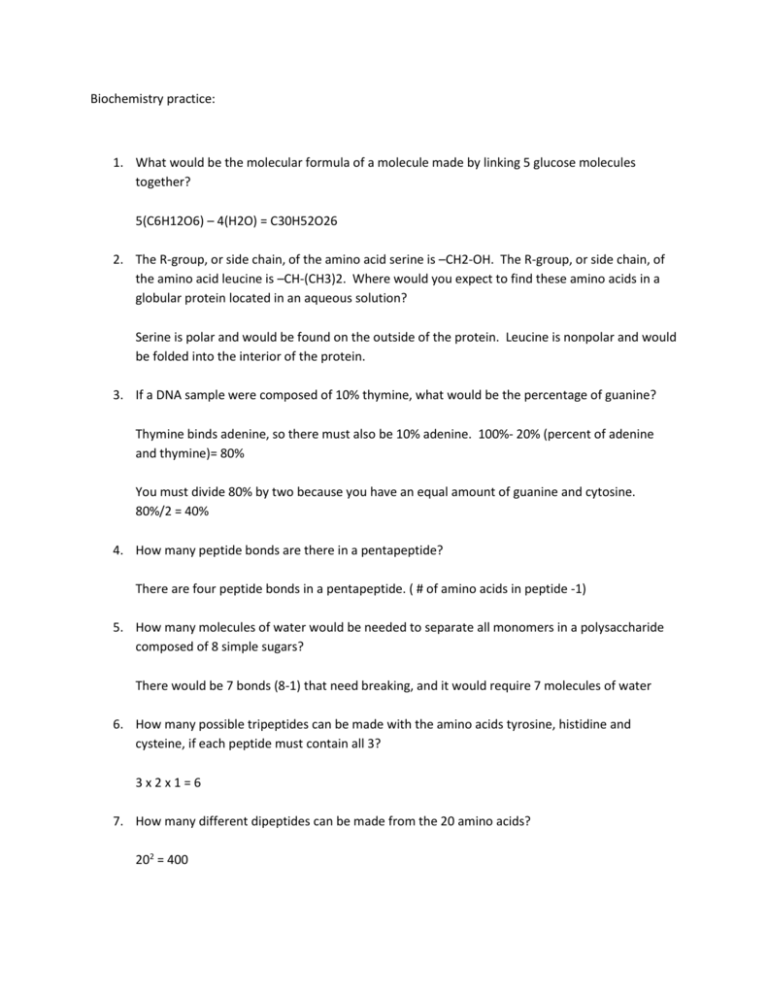
Biochemistry practice: 1. What would be the molecular formula of a molecule made by linking 5 glucose molecules together? 5(C6H12O6) – 4(H2O) = C30H52O26 2. The R-group, or side chain, of the amino acid serine is –CH2-OH. The R-group, or side chain, of the amino acid leucine is –CH-(CH3)2. Where would you expect to find these amino acids in a globular protein located in an aqueous solution? Serine is polar and would be found on the outside of the protein. Leucine is nonpolar and would be folded into the interior of the protein. 3. If a DNA sample were composed of 10% thymine, what would be the percentage of guanine? Thymine binds adenine, so there must also be 10% adenine. 100%- 20% (percent of adenine and thymine)= 80% You must divide 80% by two because you have an equal amount of guanine and cytosine. 80%/2 = 40% 4. How many peptide bonds are there in a pentapeptide? There are four peptide bonds in a pentapeptide. ( # of amino acids in peptide -1) 5. How many molecules of water would be needed to separate all monomers in a polysaccharide composed of 8 simple sugars? There would be 7 bonds (8-1) that need breaking, and it would require 7 molecules of water 6. How many possible tripeptides can be made with the amino acids tyrosine, histidine and cysteine, if each peptide must contain all 3? 3x2x1=6 7. How many different dipeptides can be made from the 20 amino acids? 202 = 400 8. If 500 glucose molecules are used to make starch, how many molecules of water would be produced in the condensation reactions? 499 (500-1) 9. If a cellulose molecule consisted of 2000 glucose units, how many carbon, oxygen and hydrogen atoms would it contain? 2000 (C6H12O6) – 1999 (H2O) = C12000H20002O10001 Identify the following molecules: 10. Fatty Acid (unsaturated) 11. Steroid 12. Triglyceride (saturated) 13. DNA strand (deoxyribose shown) 14. Tripeptide Identify the following amino acids as polar/nonpolar, and acidic or basic if applicable. 15. nonpolar 16. polar 17. Polar, acidic
